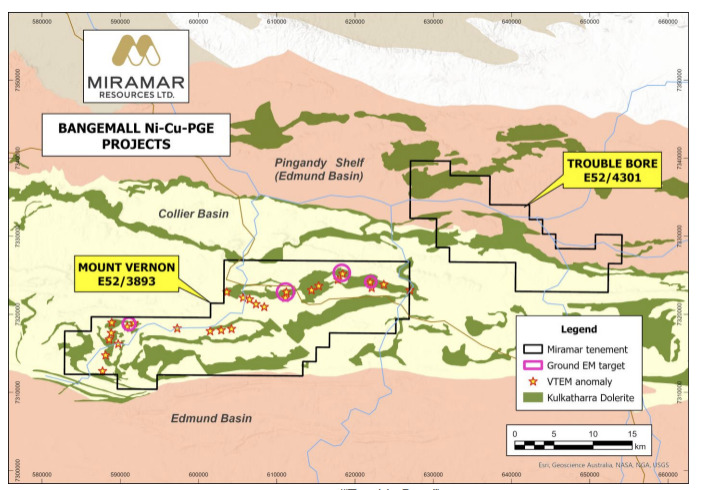Miramar may hold the key to a whole new nickel province with new exploration licence at Bangemall

Miramar’s new ‘Trouble Bore’ project has never been effectively explored for nickel-copper-PGE’s. Pic via Getty Images
- Miramar Resources has expanded its footprint at the Bangemall project with the grant of exploration licence E52/4301
- M2R believes there is potential for nickel, copper and PGE mineralisation, the same age as the Nebo-Babel deposit
- The company plans to show ‘proof of concept’ through more discoveries either in outcrop or through drilling
Special Report: Miramar has expanded its footprint in WA’s Gascoyne with the recent grant of exploration licence E52/4301, adjacent to the high-priority Mount Vernon nickel-copper-PGE project.
Miramar Resources (ASX:M2R) has several granted and pending exploration licences in the Bangemall region of WA and the Proterozoic Capricorn Orogen, host to several large gold, copper and nickel PGE deposits.
WA’s Capricorn Orogen is significantly underexplored, despite similar geology and mineral potential to the Albany-Fraser and Paterson Orogens.
M2R has now expanded its landholding at the Bangemall project with the granting of E52/4301.
The explorer believes the mineralisation at Bangemall is related to Kulkatharra dolerite sills, part of the Warakurna Large Igneous Province and the same age as the 390Mt Nebo-Babel nickel-copper-PGE mine, previously owned by BHP.
Potential new nickel province
According to M2R, the new ‘Trouble Bore’ project contains several of these dolerite sills, and has never been effectively explored for nickel, copper, or PGE mineralisation.

M2R executive chairman Allan Kelly says the company is aiming to show ‘proof of concept’ at Bangemall through the discovery of nickel-copper-PGE sulphides, either in outcrop or through drilling.
“If we are successful at Mount Vernon, it opens up the entire Bangemall region as a new nickel province, one in which we have built a commanding land position,” he says.
Previous exploration and geology
Previous exploration is limited and sporadic and focussed mainly on exploration for sediment-hosted copper, lead and zinc during the 1990’s and early 2000’s.
More recent exploration since 2009 focussed on the search for channel iron deposits (CID) by Rio Tinto Exploration in the period 2012-2014.
Rio Tinto flew a SkyTEM electromagnetic survey in 2013, with N-S survey lines and a relatively broad line spacing of 1000m, and subsequently drilled three RC holes within the area now covered by E52/4301.
The licence is mostly within the Collier Basin and straddles the contact with the older Edmund Basin sediments within the Pingandy Shelf.
Across the southern two thirds of the tenement, the local geology is dominated by Kulkatharra Dolerite sills which intrude into sediments of the Collier Basin.
What’s next?
Miramar’s aim for Bangemall is to show ‘proof of concept’ of the deposit model through proposed work programs, including:
- Completion of fixed loop electromagnetic (FLEM) surveys over selected high-priority VTEM anomalies at Mount Vernon, followed by modelling and RC drill testing;
- Ground checking and sampling of SkyTEM anomalies at Trouble Bore;
- Progressing other tenement applications to grant; and
- Identifying other prospective areas to peg.
This article was developed in collaboration with Miramar Resources, a Stockhead advertiser at the time of publishing.
This article does not constitute financial product advice. You should consider obtaining independent advice before making any financial decisions.

UNLOCK INSIGHTS
Discover the untold stories of emerging ASX stocks.
Daily news and expert analysis, it's free to subscribe.
By proceeding, you confirm you understand that we handle personal information in accordance with our Privacy Policy.








